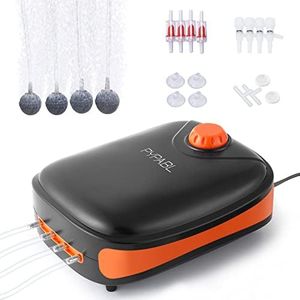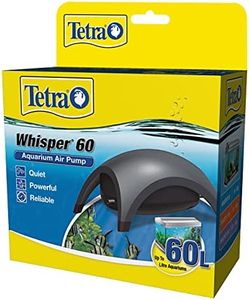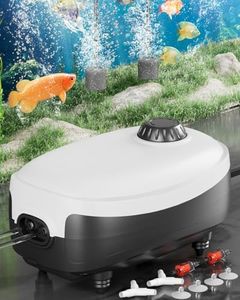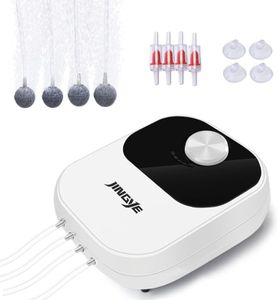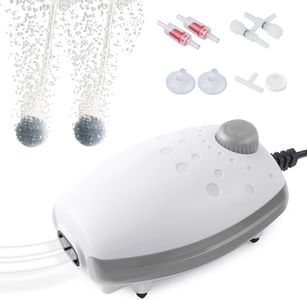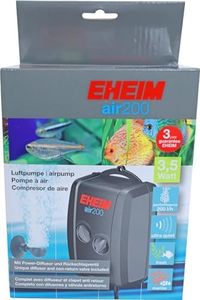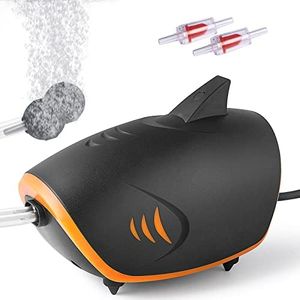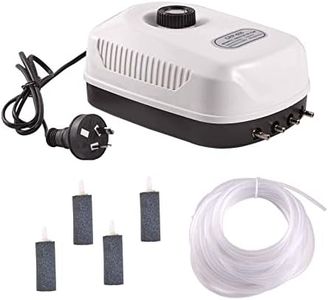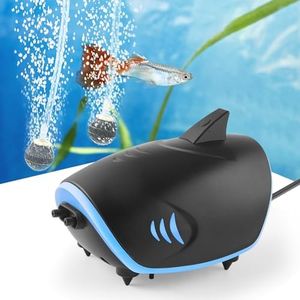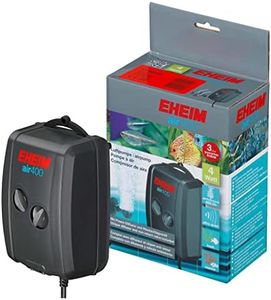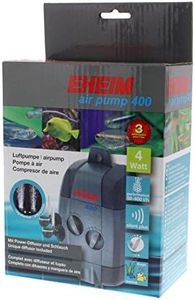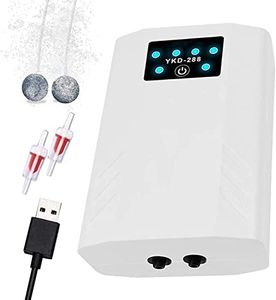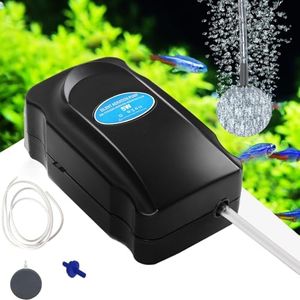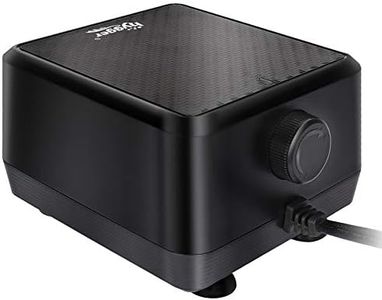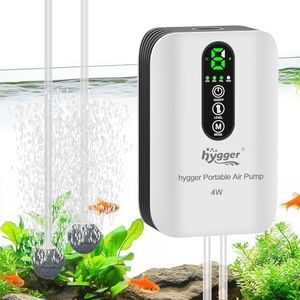We Use CookiesWe use cookies to enhance the security, performance,
functionality and for analytical and promotional activities. By continuing to browse this site you
are agreeing to our privacy policy
10 Best Quiet Aquarium Air Pumps
From leading brands and best sellers available on the web.Buying Guide for the Best Quiet Aquarium Air Pumps
Choosing a quiet aquarium air pump can make a big difference in your enjoyment of your fish tank. A good air pump helps oxygenate the water, keeps your fish healthy, and runs any air-powered equipment. The quieter the pump, the more peaceful your home or office will stay. To choose the best air pump for your needs, focus on a few important specifications, thinking about your specific aquarium size, where the tank will be placed, and how sensitive you are to noise.Noise Level (dB)Noise level, usually measured in decibels (dB), tells you how loudly the pump operates. This is one of the most important specs in 'quiet' air pumps. Lower dB means quieter operation. Pumps can be described as silent (under 20 dB), quiet (20-30 dB), or standard (above 30 dB). If your aquarium is in a bedroom, office, or living room, you’ll likely want a pump in the silent to quiet range. If background noise isn’t a big deal for you, a standard pump might be acceptable. Always check if the manufacturer specifically mentions noise levels, and if possible, listen to sample videos or reviews.
Air Output/Flow RateThe air output, often measured in liters per minute (L/min), tells how much air the pump can deliver to the tank. A higher value means more bubbles and better oxygenation, but bigger pumps can be noisier and use more energy. For small tanks (up to 10 gallons), you need less air flow; medium tanks (10-30 gallons) need moderate flow; large tanks (over 30 gallons) need higher output. Consider how many devices (like air stones or ornaments) you want to power. Choose an output that matches your tank size and equipment, but avoid excessively powerful pumps for small tanks since that can cause unnecessary noise and disruption.
Number of OutletsSome pumps have one outlet for a single airline, while others have two or more, letting you run multiple air devices at once. If you have a small tank or just want to power one air stone, a single outlet is enough. For bigger tanks, multiple tanks, or more devices, look for a pump with more outlets. Having extra outlets can increase versatility, but too many unused outlets can make the pump larger or slightly noisier. Match the number of outlets to your needs to avoid overkill.
Pump Size and PlacementThe size and shape of the air pump affect where you can place it and may impact noise. Smaller pumps are easier to hide and often vibrate less, but may offer less power. Placement on a soft surface or anti-vibration mat can reduce noise. Think about where the pump will live—if it has to go in a visible or audible spot (like a desktop), smaller and quieter is better. If space isn’t an issue and the pump will be hidden away, you can be more flexible.
Energy EfficiencyEnergy efficiency describes how much electricity the pump uses to deliver air. More efficient air pumps use less electricity, staying cool and generating less noise from motor strain. For one small tank, this may not be a huge concern, but running multiple tanks or leaving the pump on 24/7 makes efficiency important. Choose a pump with good energy ratings if you want to save on electricity bills and minimize heat and extra vibration.
Vibration Damping FeaturesSome pumps include features like rubber feet, suspended motors, or sound-absorbing casings to limit vibrations and noise. These features can make a real difference, especially in quiet rooms. If noise is your main concern or your pump will sit on a hard surface, look for pumps designed with anti-vibration or soundproofing features. If you’re less sensitive to background hum, you might be fine with a more basic design.
